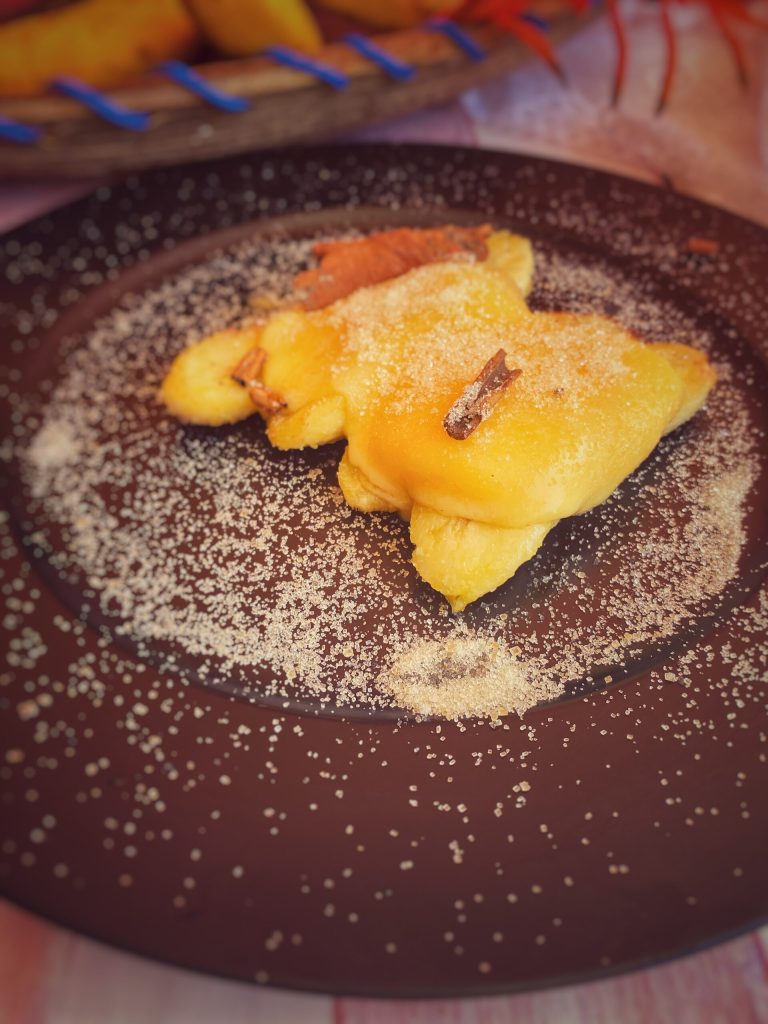The Cartola is one of the most traditional desserts of Pernambuco, which was recognized as an intangible heritage of Pernambuco by law 13.551 in April 2009
It consists of bananas fried in butter or oil, cheese or melted butter placed on top of the fried bananas sprinkled with cinnamon and sugar (sometimes also with chocolate syrup).
Considered the result of the cultural mix of Portuguese colonizers, local indigenous peoples, and enslaved Africans, the Cartola is a demonstration of the blend of the three main peoples that formed the culture of Northeast Brazil.
Bananas became very popular in Brazil when brought from the Canary Islands by the Portuguese, and sugar was very abundant, being one of the main economic and social bases of the country.
Cinnamon was one of the most appreciated and traded spices, also used as a base for various other desserts and cheeses and part of the meals of the enslaved.
Other Brazilian banana-based recipes:

- Difficulty: Very easy
- Cost: Very cheap
- Preparation time: 5 Minutes
- Portions: 4 people
- Cooking methods: Frying
- Cuisine: Brazilian
- Seasonality: All seasons
Ingredients
- 4 bananas (preferably dwarf bananas)
- 7 oz queijo coalho (see note below)
- as needed butter
- as needed sugar
- as needed ground cinnamon
Steps
Slice the bananas lengthwise.
Fry them in butter for a few minutes, turning frequently.
Set aside.
In the same butter, fry cheese slices, cut to 0.6 inches, for a few seconds.
Serve hot with the bananas as the base, cheese semi-melted on top, and sprinkle with the cinnamon and sugar mix.

FAQ (Questions and Answers)
Why is the Brazilian dessert named Cartola?
It is believed that the name Cartola (top hat) comes from the fact that the dessert is structured in layers and has a dark coloration due to the cinnamon, reminiscent of the hat that once adorned the heads of English gentlemen.
What cheese can replace queijo coalho?
The production process of queijo coalho is very simple, consisting of coagulating unpasteurized raw milk, salting, and pressing the dough.
It has the characteristic of being hard on the outside and soft on the inside when heated.
In Italy, it can be replaced with a hard cheese like caciocavallo, or with quartirolo or primo sale.

